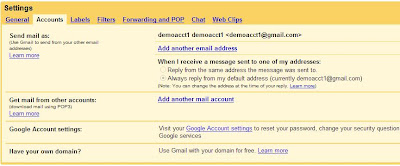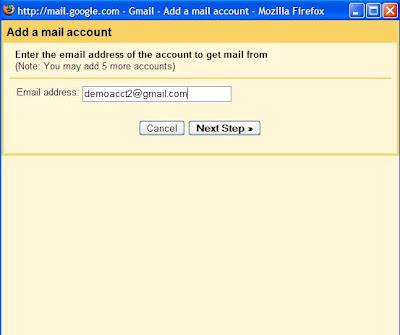开始卖Nextnation(Nextnat:0096),但也不知道该买什么股票(没法子,这段期间,十粒股,九粒起,一粒跌,我买到了跌的那粒,也是我唯一一粒,命水这东西,真无话可说,相信也只有
Megan Media Holdings(Megan:7101)的小股东能明白),只是相信综合指数还会向上,所以看来应该是直接买ETF了,希望能分一杯羹。
转载自:
http://biz.thestar.com.my/bizweek/story.asp?file=/2007/7/14/bizweek/18279309&sec=bizweek
This first article of a four-part series by Bursa Malaysia on Exchange Traded Funds provides investors insights into index investing
Have you heard how sometimes people refer to the stock market by asking “where is the market today?” When they use this phrase they are actually referring to an index. A good example of an index that we have all heard about is the Kuala Lumpur Composite Index, more commonly known as the KLCI. If the response is: “the market is up”, this would mean that the KLCI is higher today than the day before. But why is an index important? And how can investors use it to make money?
An index is important because of what it represents. Because it is too difficult to track every single share trading on the stock exchange, we instead create an index that tracks the more “relevant” shares. These relevant shares, normally the heavyweight stocks, are so important that when they appreciate, the entire bourse goes up and when majority of them lose value, the entire stock market is on its way down. An index must define exactly what criteria it uses to select its shares. The beauty of an index is that it is extremely easy to understand and investors know exactly what they are acquiring by putting money in an index.
How an index is constructed
Because an index is made up of a basket of stocks, one must note that it can be constructed to represent any segment of the stock market. For example, one of the more widely known indexes in the world is the S&P 500 Index created by Standard and Poor’s Index Services.
The S&P 500 represents 500 of the most widely held companies in the US such as General Electric, Microsoft and Tupperware. Shares within this index trade on major US bourses such as the New York Stock Exchange and Nasdaq.
Regarded as one of the best indicators to gauge performance of the American equity markets, the job of many American fund managers is to produce returns that outperform this index.
Meanwhile, the FTSE 100 index holds the top 100 largest companies listed on the London Stock Exchange. The index is seen as a barometer of the British economy and is the leading share index in Europe.
When the indexes become more familiar, you will start noticing them in every single market and for every possible industry. Remember that anyone can create an index. During the dot-com bull market almost all the publications in the US created an index to represent different types of new-economy stocks. What sets the big indexes apart is the reputation of the company that creates and manages the index.
Another way to differentiate one index from another is how it measures the importance of each security within its basket. Think about a shopping or a to-do list. There will always be an item that is more important than the rest. This is the same for an index; there will always be shares of companies that are more influential to the entire market due to their size or share price.
A common method used by indexes around the world is to weigh companies based on market capitalisation. For example, say company ABC has a market capitalisation of RM1mil, and the total value of all the companies within an index is RM100mil. This means that shares of company ABC would be worth 1% in this index. These calculations are done up-to-the-minute with computers, making indexes an extremely accurate reflection of its chosen market.
How an investor can make money
An index requires very little maintenance. Other than the occasional fine-tuning, it only needs to hold on to its basket of stocks from year to year. This means lower costs for an investor. When you invest purely in an index, there are no fund managers to pay for their stock picking skills, as there is no active stock picking involved! This means more of your money is invested and gets a chance to grow.
In countries like the US, the expense ratio which translates as the “cost of investing” of an index fund can be as low as 0.15%. Compare this cost with the expense ratios of actively managed funds (funds that have a fund manager and a team of analysts selecting stocks to buy or sell), which can exceed 5%. The difference in cost to your investment is show in Table 1.
With an index, investors get to decide on what and where their money should go. For example, if you believe that China’s economy will continue to grow with each passing year, you could jump on China’s bandwagon by investing in an index that tracks the country’s main stock market.
Index investing is said to be the safest gateway to invest in an unknown market as it (the index) is already diversified – a quality much desired by investors to smoothen out volatility (the losses and gains in the value of your investments).
In most cases, an index would consist of the top leading companies in a stock market. Is it possible to lose all the money that you invested in that index? Yes, but the odds of all leading companies going bust at the same time are slim. Even if it does happen, chances are all actively unit trust funds would be suffering the same fate.
Clearly, index investing will not work for you if your strategy is to make short term gains by “beating the market”. Making money with an index takes the same amount of time required for an economy to grow – years. But your investment is cheap and less risky than the average actively managed fund.
This is not to say that actively managed funds are not good. There are excellent fund managers out there that produce amazingly high returns such as the famed Peter Lynch of Fidelity Investments. Your problem is in identifying them and waiting for them to work their magic.
Also note that to compensate for the higher cost involved in an active fund, fund managers must outperform their respective benchmark index by an average 2% per annum just to match performance of an index fund tracking the same index.
How to invest in an index
There are two ways to go about investing in an index: via an index unit trust fund and an exchange traded fund (also known as ETFs). For the first option, investors must need to be aware that not all index funds are created equal.
Any fund company can create and sell index funds and some companies may charge a healthy sales commission and a high yearly management fee which immediately wipes out the main advantage of index investing – its low cost.
An ETF is a different vehicle that investors can use to invest in an index. The main difference with ETFs versus standard unit trust funds is that it trades like a normal share on the stock market throughout the trading day.
In the more matured financial markets, ETFs are growing increasingly popular with investors. The sale and purchase of ETFs make up approximately 50% of the daily trade volume on the American Stock Exchange (Amex).
In the next article, we will discuss the how ETFs work and their benefits and advantages. Simply put, the more you know about the universe of investing and all the different vehicles available – the better chance of finding the right investment at the cost and risk level you are willing to pay, for your portfolio.
This article is written by Noripah Kamso, chief executive of CIMB-Principal Asset Management Bhd
























